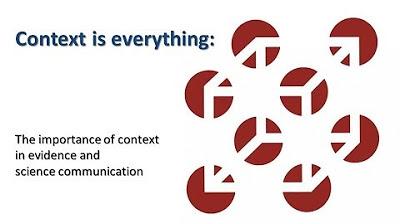How Psychology Affects Your Decision-Making
Summary
TLDRThis street science experiment explores how our brains can be tricked by 'priming', where random numbers subconsciously influence our judgments. Participants guessed the value of a bottle of wine, with their estimates swayed by numbers they were unknowingly exposed to. The video also delves into loss aversion, demonstrating people's reluctance to take risks, even with a favorable expected value. It illustrates how psychological biases intersect with mathematical reasoning, leading to irrational decision-making.
Takeaways
- 🧠 The brain can be tricked: The script demonstrates how the brain can be influenced by seemingly random numbers to make judgments.
- 🎱 Priming in action: People's guesses on the value of wine were influenced by the number '20', showing how prior information can affect decisions.
- 💸 Anchoring effect: The initial number '20' acted as an anchor for the guesses, causing them to be higher than they might have been otherwise.
- 🍷 Wine value estimation: The perceived value of the wine was influenced by the number picked, despite the wine's actual value being $16.
- 📈 Influence of context: The script suggests that the environment, like music in a shop, can sway our choices, such as between champagne and Prosecco.
- 📊 Framing matters: How information is presented (e.g., survival vs. death rates for an operation) can dramatically change our emotional response.
- 💡 Mental shortcuts: The script highlights how we use mental shortcuts, or heuristics, which can be useful but also lead to errors.
- 🚫 Loss aversion: People are generally more sensitive to losses than gains, which affects their willingness to take risks.
- 🎰 Risk aversion in betting: Even with a favorable expected value, people are reluctant to take bets due to the psychological impact of potential losses.
- 🔄 Repeated independent events: The script points out that even with repeated coin flips, the outcome of each flip is independent, affecting the perceived risk.
- 🤔 Predictable irrationality: Despite logical reasoning, people often make decisions that are not rational due to cognitive biases.
Q & A
What is the purpose of the street science experiment described in the transcript?
-The purpose of the experiment is to demonstrate how our brains can be tricked and how we can be influenced by seemingly random numbers, in this case, to judge the value of a bottle of wine.
What is the term used to describe the influence of a number on people's judgement in the experiment?
-The term used is 'priming', which refers to the phenomenon where exposure to one stimulus influences a response to a subsequent stimulus.
What is the actual value of the bottle of wine used in the experiment?
-The actual value of the bottle of wine is $16.
How does the concept of 'priming' relate to the wine-tasting scenario mentioned in the transcript?
-Priming relates to the wine-tasting scenario as it suggests that the music played in a shop can unconsciously influence a person's choice between different types of wine, such as champagne or prosecco.
What is the psychological concept explained by the professor in the transcript?
-The psychological concept explained is that our judgments and decisions, as well as our reactions to situations, can be affected by how information is framed.
What example does the professor use to illustrate the difference between mathematical and psychological equivalence?
-The professor uses the example of a vital operation with a 5% chance of death versus a 95% chance of survival to illustrate that the same mathematical odds can be perceived very differently psychologically.
What is the term for the psychological phenomenon where losses are felt more keenly than gains?
-The term for this phenomenon is 'loss aversion'.
How does the concept of loss aversion affect people's willingness to take risks in the betting scenario described?
-Loss aversion affects people's willingness to take risks by making them more sensitive to potential losses than to equivalent gains, leading them to avoid bets where they could lose money.
What changes in the betting scenario make it more tempting for people to participate?
-The scenario becomes more tempting when the odds are significantly in favor of the participant, such as flipping a coin a hundred times with a win of $20 and a loss of $10.
Why does the transcript mention that people are 'predictably irrational'?
-People are mentioned as 'predictably irrational' because they consistently make decisions that defy logical reasoning due to cognitive biases like priming and loss aversion.
What is the final outcome of the coin flip in the betting scenario described in the transcript?
-The final outcome of the coin flip is tails.
Outlines

Dieser Bereich ist nur für Premium-Benutzer verfügbar. Bitte führen Sie ein Upgrade durch, um auf diesen Abschnitt zuzugreifen.
Upgrade durchführenMindmap

Dieser Bereich ist nur für Premium-Benutzer verfügbar. Bitte führen Sie ein Upgrade durch, um auf diesen Abschnitt zuzugreifen.
Upgrade durchführenKeywords

Dieser Bereich ist nur für Premium-Benutzer verfügbar. Bitte führen Sie ein Upgrade durch, um auf diesen Abschnitt zuzugreifen.
Upgrade durchführenHighlights

Dieser Bereich ist nur für Premium-Benutzer verfügbar. Bitte führen Sie ein Upgrade durch, um auf diesen Abschnitt zuzugreifen.
Upgrade durchführenTranscripts

Dieser Bereich ist nur für Premium-Benutzer verfügbar. Bitte führen Sie ein Upgrade durch, um auf diesen Abschnitt zuzugreifen.
Upgrade durchführenWeitere ähnliche Videos ansehen

Reality is a Controlled Hallucination

Context is everything: The importance of context in evidence and science communication

“Deja en paz a tu cerebro”. David del Rosario, investigador en neurociencia

Social Experiment On Mob Mentality

Social Conformity - Brain Games

Don’t Believe Everything You Think | Lisa Penney | TEDxUSFSM
5.0 / 5 (0 votes)
